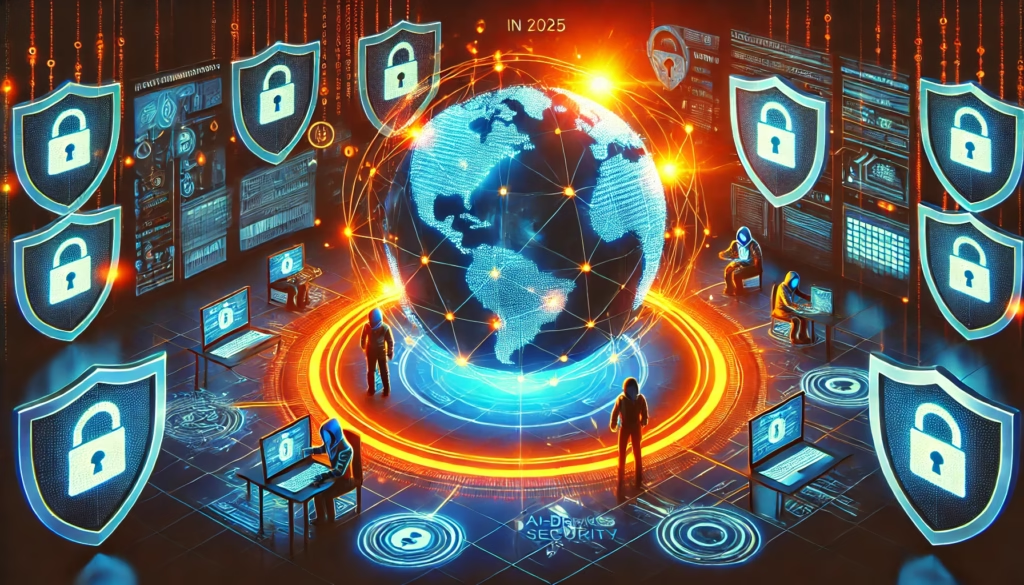It is 2025 and for the cybersecurity world, things were never so hard, the big part of the world are telling that they have seen more complex threats than ever. The information age is fuelled by digitalization, and the technology is getting more complex when the world is moving towards smart homes, industries, and cities. In this article, we explore the top cybersecurity threats 2025, what it means for individuals and organizations, and ways to protect against these threats.
The Growing Threat Landscape for Cyber Attacks
Cybercrime is more widespread than ever, with estimates now suggesting that damages from cybercrime worldwide will hit $10.5 trillion a year by 2025. [cybersecurityventures.com] This uptick highlights the pressing need for strong cybersecurity defenses throughout all industries.
1. Advanced Ransomware Attacks
Ransomware remains a top threat and is becoming more complex and frequent. In 2025, advanced ransomware operations target healthcare systems, infrastructure, and financial institutions. Hackers use sophisticated methods like double extortion, wherein they encrypt data and also threaten to publish private information if the ransom isn’t paid. [cloudsecurityalliance.org]
2. Supply Chain Vulnerabilities
Supply chain attacks are a major area of concern, and analysts predicted that 45% of organizations globally would be impacted in some way by 2025. These attacks take advantage of a weak point in the external systems to access more sizeable networks that cause substantial disruptions and data breaches. [techtarget. com]

3. AI-Powered Threats
Artificial Intelligence has also been integrated into cyber-attacks that has made cyber threat more sophisticated. Hackers now have AI tools that can create ever-changing, destructive malware, and it’s raising alarm bells for security experts. Algorithms will carry out their own phishing and ransomware attacks, while urgent action is required by companies to prepare for autonomous cyberattacks powered by AI. [axios.com]
4. Quantum Computing Threats
The emergence of quantum computing brings with it both opportunity and risk. It has potential to revolutionize in many areas of life but it also endangers existing encryption standards. Organizations in the UK are being advised that they must protect their systems from potential attack against quantum computers by 2035 as part of the UK government’s National Cyber Security Centre (NCSC) strategy. Quantum computers could crack complex mathematical problems in the blink of an eye, threatening the encryption standards that protect secure communication, banking and other sensitive interactions. [theguardian. com]
5. Attacks on Encryption
In the last decade, encrypted communication through services such as Signal, iMessage and WhatsApp has become a mainstream for billions of users, but ensuring their users’ privacy. But the threats to erode encryption are increasing. Now the governments and law enforcement agencies of the UK, France and Sweden have all put forward measures to undermine encryption, joining similar moves in the EU and India. This amidst notice that US intelligence agencies are now advising encryption, after the Chinese Salt Typhoon hackers compromised them. [wired.com]
What it Means for Organizations and Individuals
The changing threat landscape requires proactive steps from organizations as well as individuals.
For Organizations
- Improved Security protocols: The deployment of real-time threat detection, AI-based defense mechanisms, and rapid threat response to counter advanced forms of security threats.
- Third-Party Risk Management: Comprehensive assessments performed of all third-party vendors to uncover and eliminate potential vulnerabilities.
- Quantum-Resistant Encryption: Moving to encryption techniques that can withstand quantum computing capabilities.
For Individuals
- Cyber Hygiene: Following the principles of good cyber hygiene — including using strong, unique passwords, and multi-factor authentication.
- Awareness and Education: Staying up to date on common cyber threats, phishing and social engineering tactics.
- Encrypting Communication: Use of secure and encrypted mediums for the transmission of personal information.

Strategies for Mitigation related to Cybersecurity threats 2025
It should be noted that combating Cybersecurity threats 2025 will require more of a team effort.
1. Investment in Advanced Technologies
Adopting enterprise cybersecurity solutions– AI- and machine-learning-powered tools can help enhance threat detection and response.
2. Regulatory Compliance
It’s essential to comply with ever-changing cybersecurity laws and standards. New laws coming into force in 2025 may require sensitive data to remain within national borders, impacting how companies manage and store data across regions. [cisecurity.org]
3. Frequent Training and Sensitization
Training employees and the public on a regular basis greatly decreases the chance of a cyber incident, due to awareness of new threats and best practices.
4. Collaboration and Information Sharing
Cybersecurity methods can be more efficient through private-public partnership to threat intelligence.
Way Ahead
Cybersecurity Threats 2025: The Complex Web of Issues that Needs to be Addressed Today! Organizations and individuals alike can better navigate the digital world by being aware of the evolving threat landscape and implementing holistic security measures. By engaging proactively, educating continuously, and innovating technologically, we can reduce the risk posed by this constantly evolving cyber threat landscape.
You may also like to read: AI-Powered Surveillance Sparks Global Backlash: Privacy Concerns, Legal Battles & Ethical Dilemmas


